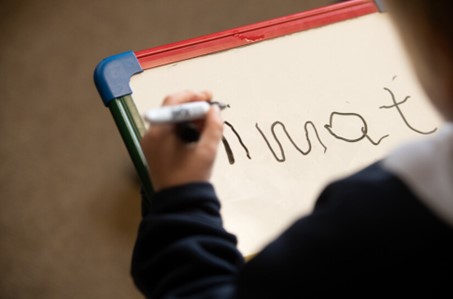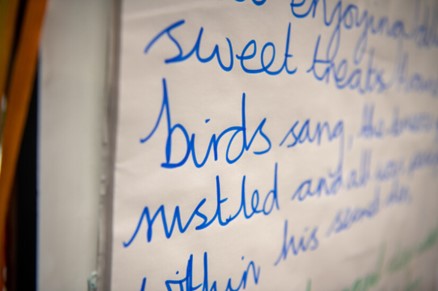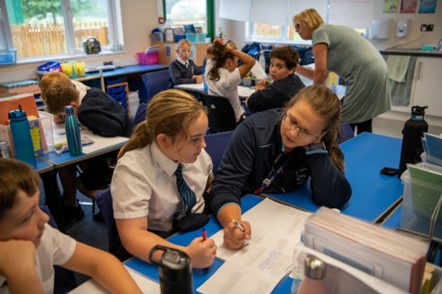Writing
"If you don’t see the book you want on the shelf, write it!" Beverly Cleary
At St Andrew’s, we want our pupils to develop into confident writers who write clearly and accurately as well as have a love for writing. Our bespoke writing toolkits link with our Cornerstones Projects and match the needs of the pupils as they progress across the year. Our writing pedagogy uses a 3 stage cycle that seeks to overlearn new skills and knowledge in order to support long-term memory. We use Talk for Writing oracy models to promote clear and correct speech patterns as well as correct grammar and punctuation rules. The cycle scaffolds the complete writing process from genre skills, vocabulary extension, planning and structure to final edit and publish. We encourage pupils to see themselves as authors and celebrate written work in classrooms, competitions and assemblies.
What does out approach to Writing look like in the classroom?
In EYFS and Key Stage 1, pupils establish the building blocks of reading and writing through phonics (Read Write Inc). This is a daily lesson where pupils look at a sound a day and practise writing it. Pupils practise these sounds (spelling patterns) and eventually create words using them, which progress into phrases and finally full sentences. Vocabulary and grammar rules are taught explicitly every week but are also woven into our Talk Stories (oral and picture guides to a style of writing) which the pupils use as a scaffold to create their own piece of independent writing at the end of the unit. Talk Stories are learnt by the children so that correct grammar and speech patterns can be learnt aloud and rehearsed orally before writing.
In Key Stage 2, pupils study more complex toolkits of skills that are modelled through talk stories, which are learnt by heart or looked at in detail. Grammar and vocabulary enrichment are taught across the week in spelling, reading and writing lessons. St Andrew’s has designed a progressive curriculum which builds upon previous teaching, including regular assessment, to ensure each pupil’s needs are met so they can reach their full potential.
What does success in Writing look like?
- Exciting writing opportunities and experiences that engage and inspire all pupils
- Pupils are able to communicate and express themselves through writing
- Pupils write clearly, accurately and coherently, adapting their language and style to suit a range of contexts, purposes and audiences
- Every pupil to have a good knowledge of phonics to springboard them to becoming fluent writers
- Ensure all pupils have a solid understanding of grammar and apply it effectively to their writing
- Writing that reflects an increasingly wide and rich vocabulary
- Pupils take pride in the presentation of their writing, in part by developing a legible, joined handwriting style by the time they move to secondary school
- Pupils are able to spell new words by effectively applying the spelling patterns and rules they learn throughout their time in primary school





